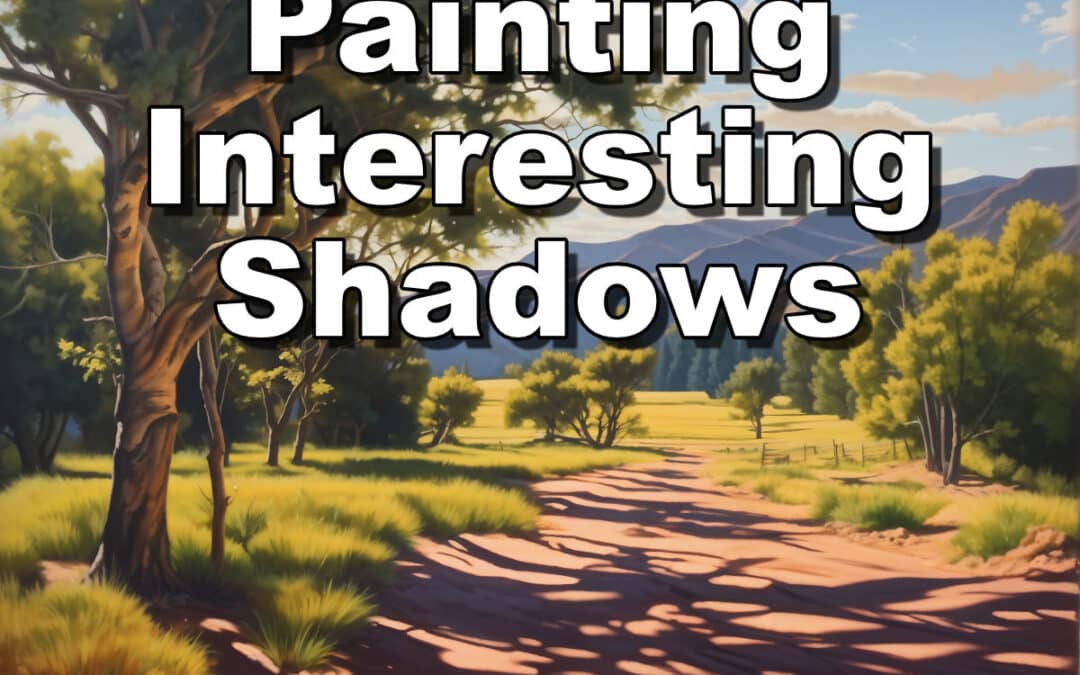In this tutorial I will be teaching you how to keep the shadows in your paintings interesting and realistic.
Shadow Types
In order to do that we will first look at the types of shadows you get, then what influences them.
You get two types of shadows:

1) Form Shadows
A shadow due to the shape or form of the object, eg. half of a ball is always in shadow because the light can’t bend around the ball to light up that area.
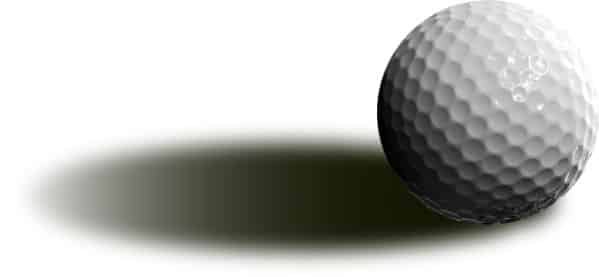
2) Cast Shadows
A shadow cast by an object onto the objects surrounding it.
Factors Influencing Shadows
There are 6 things that influence how we see a shadow. Let’s take a look at what they are.
1) You Can’t Have Bright Lights Without Dark Shadows

The first things we need to realise when it comes to shadows is that an object cannot be in shadow, or cast a shadow, if there is no light.
I know this sounds patently obvious, but when it comes to art I constantly see artists forgetting their shadows or not making them dark enough.
If you don’t paint in the shadows, then you have removed the light from your artwork.
The brighter the light, the darker the shadows appear.
A typical example of this is the difference in the shadow between a sunny and an overcast day.
As the light is stronger on a sunny day, the shadows are a lot more pronounced.
2) Shadows are Not Uniform
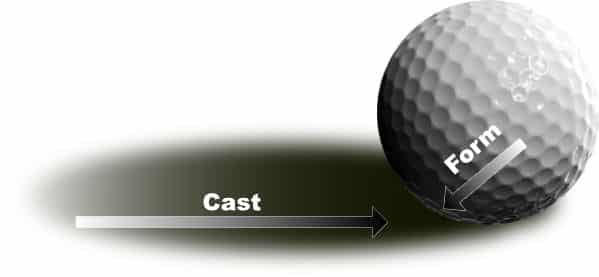
They appear darker and lighter depending on a variety of factors.
The closer to an object a cast shadow is, the darker it appears.
On the other hand, the more an area on an object points away from the light, the darker it’s form shadow will appear.
3) Shadows Don’t All Have Hard Edges
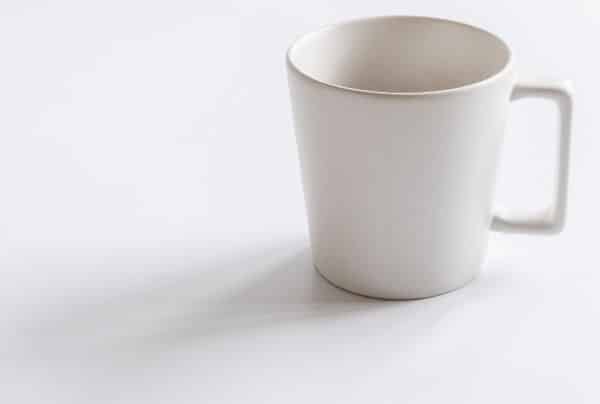
As light travels in a straight line you will find that reflected light affects cast shadows in open areas more than in tight areas. This results in a cast shadow being more crisp against the object with it gradually blurring the further away it extends beyond the object.
You can see that affect here with the shadow cast by the mug. Notice how crisp it is against the mug and then it softens to become lighter and lighter and blurrier and blurrier as it moves away from the mug due to reflected light that can now get into the more open area.
4) Shadows are Not a Copy of the Object
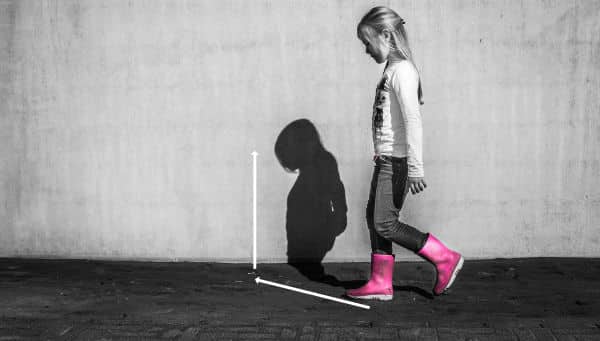
The shape of a shadow does not always look exactly like the shape of the object.
The shape of the shadow will depend on the angle of the light, strength of the light, how much reflected light there is as well as what that shadow is falling on.
If the light is low, the shadow is long. If the light is high, the shadow is short.
If the light is weak, the shadow will be light and soft. If the light is strong, the shadow is dark and defined.
If the area shadow is falling on is not a flat surface, the shadow will distort to conform to this shape.
5) Light Affects Shadows
There are three different types of light that affect the shadows in a scene.

i) Direct light
This is the light source itself. As mentioned before the brighter the light source, the darker the shadow.
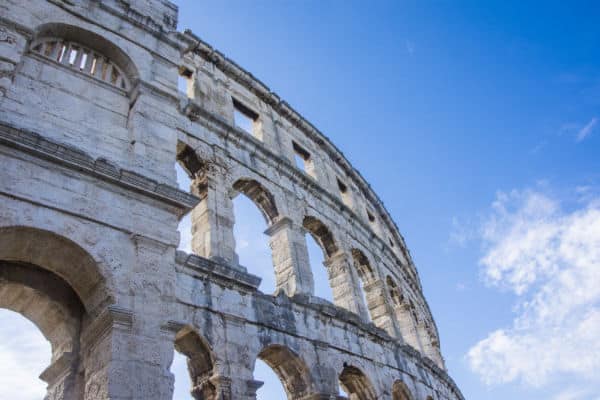
ii) Ambient light
This is the general light in the scene.
For example outdoors the sunlight makes the sky glow blue so the ambient light is blue.
In a room with red walls the light will bounce off the walls creating an ambient red glow in the room.
By the same token if you are using a blue globe as the light source then the ambient light will also become blue.

iii) Reflected light
This is light that reflects off the objects in the scene.
When light hits an object some of that light will reflect off of the object. This reflected light will take on the colour of the object that it is reflecting off of. For example, if light is reflecting off a green apple, the reflected light will be greener that the light hitting the apple.
Ambient and reflected light is however weaker than direct light. As a result direct light overpowers any ambient & reflected light it is shining on, rendering them invisible in that area.
Shadow areas are created wherever direct light cannot reach.
It is in these shadow areas where ambient and reflected light end up being the strongest light and will soften and discolour the shadows where they can reach.
6) Ambient Occlusion Zone
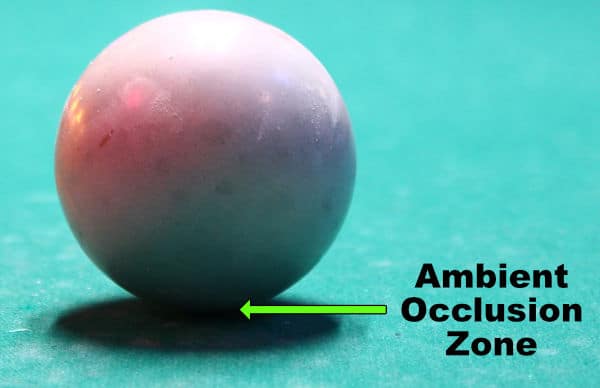
The area where neither direct, ambient or reflected light can reach is the darkest dark area. This area is called the ambient occlusion zone which is just a fancy term for saying that not even ambient light can reach there.
What is interesting about an ambient occlusion zone is that you will often find that it is so dark that you can tell where one object ends and the next starts and that also add to the realism of your shadows.
It is these six features of a shadow that are going to allow you to create paintings with interesting shadows.
Studying Shadows in Real Life
Let’s take a look at a few photos so you can see how this happens in real life.
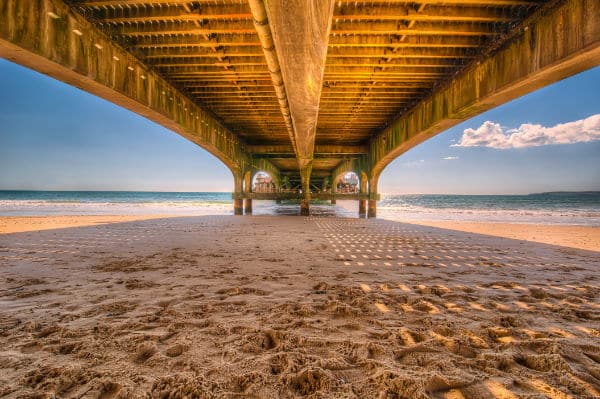
Take a look at the shadow cast by this pier. Notice how the left and the right hand side is bluer than the central area. On the outsides of the shadow the blue ambient light from the sky is able to get in and discolour the shadow making it appear bluer.

On the other hand in this shadow we have reflected light bouncing off of the building that is making the shadow redder towards the right hand side.
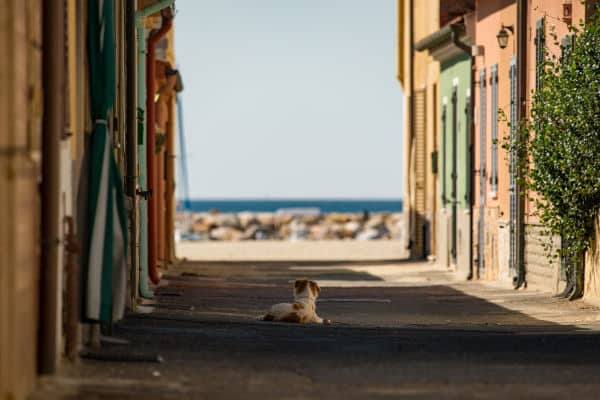
Just look at how interesting the shadows cast onto the road are in this photo. If you look carefully you will notice that the colour of each apartment wall is reflecting into the shadow on the road adding beautiful colour and interest to the shadow.
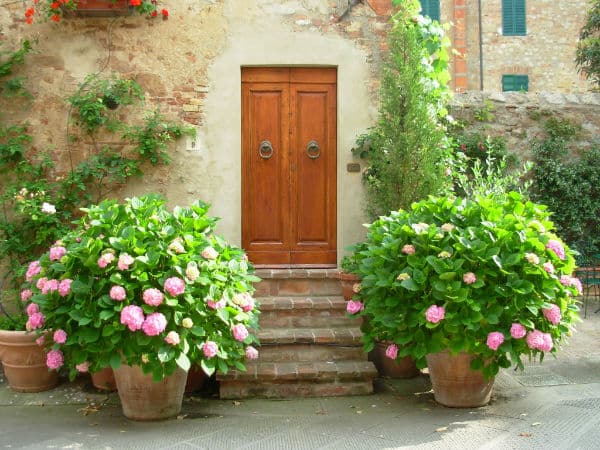
Now take a look at the shadows cast by these potted plants. The green reflecting off the leaves is infusing itself into the shadow on the ground.

This scene here has a typical shadow where artists would make a classic mistake of painting a uniform shadow.
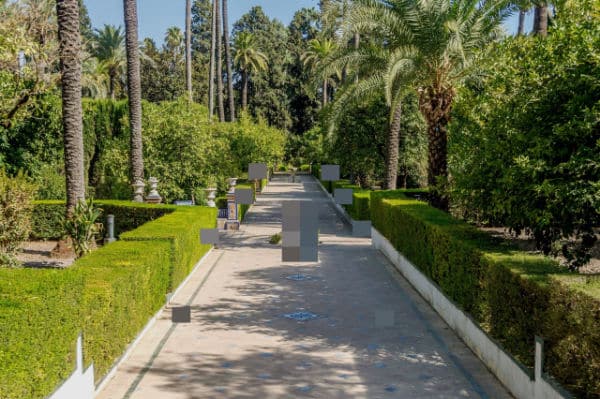
Let’s take a few colour samples running along the right hand side of the path. As you can see they are generally the same colour and even a similar tonal value. You would expect the same result on the left-hand side.
As you can see that’s not the case. The left hand shadows are more brown where the right hand shadows are more blue.
Tip – I have grouped the colour swatches in the center to make it easier to compare.
Why is there such a big colour difference between the left and right side shadows?
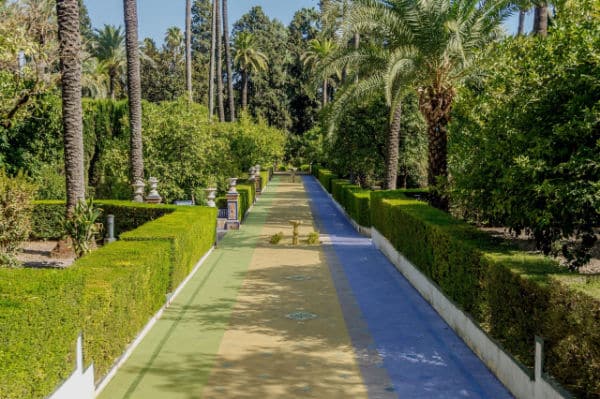
The shadow area on the right hand side (marked in blue) is right up against a hedge so very little reflected light can get in there. As a result it is only the sky blue ambient light that is affecting the shadow against the hedge.
Towards the right more reflected light is not only softening the edges of the shadow but also changing it’s colour. (Marked in yellow).
On the far left the shadows are picking up more of the sunlight colour as well as some of the reflected yellow green from the hedge on the left. (Marked in green).
In order to make this shadow look interesting when you paint it, you would add this variation in from right to left. For the front to back however you would need to use your artists licence to make the distance shadows lighter in order to exaggerate atmospheric perspective in the scene. This will then give you a good looking in effect in the final painting.
Examples of Interesting Shadows in Paintings
Now let’s take a look at some actual paintings where ambient and reflected light have been used to create interesting shadows.
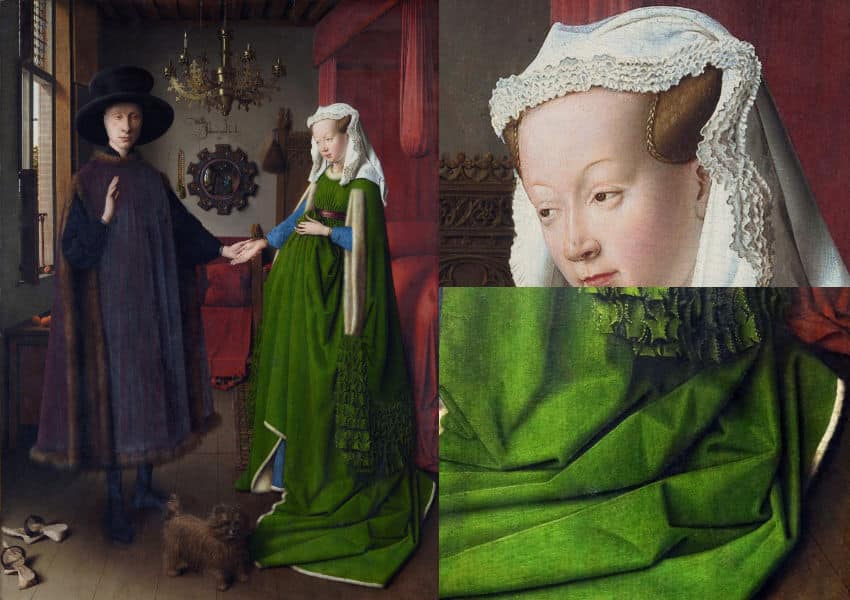
We’ll start way back in 1434 with this painting by Jan van Eyck. Here you can see how he has added green reflections into the headdress caused by the green dress and then bluer sky coloured ones in the top area.
Inside the shadows of the dress we can see some of the surrounding reds and browns reflected.

Next up we have Girl with a Pearl Earring by Johannes Vermeer. In this painting you can see how he has reflected the white of the collar inside the area of the face where you normally would expect to see the darkest shadows. This has added an extra dimension of light into the painting.
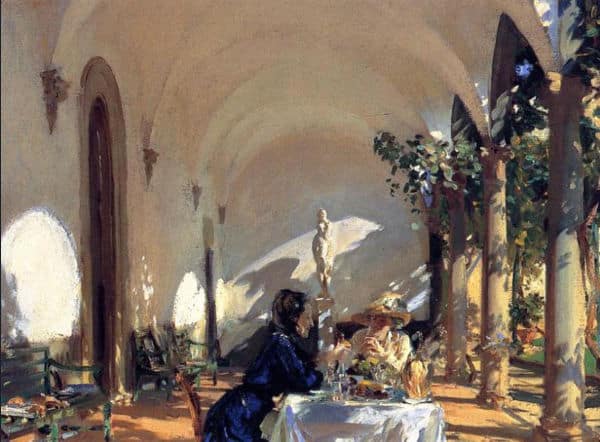
Then take a look at this painting by John Singer Sargent and see how many beautiful reflected and ambient light patches he has masterfully added into the roof and the pillars.
Also have a close look at the tablecloth to see the ambient light effects he has added in this area.
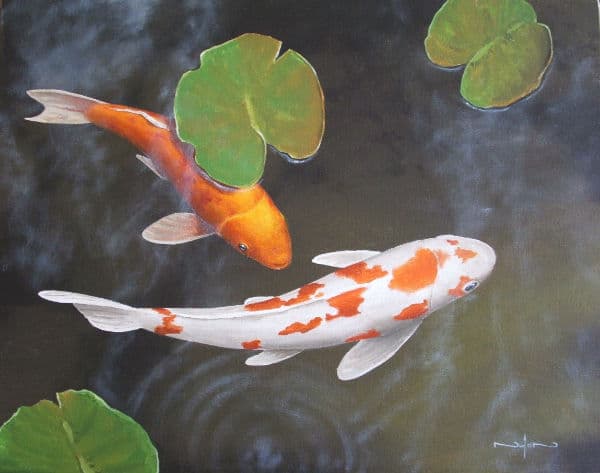
Lastly here is one of my own paintings were you can see how I have reflected the Koi’s body colour inside the shadow areas of the fins on the red fish.
If you found this tutorial useful you are going to love learning how to Paint Interesting Foregrounds as well.
